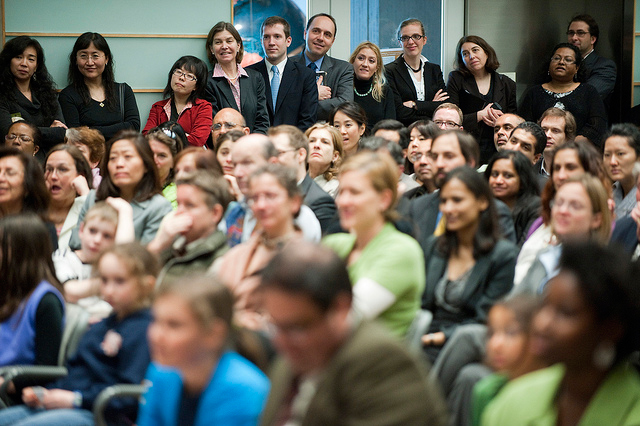
We have known for quite a while the environmental movement is stubbornly White. Most recently, Barbara Grady, of GreenBiz Group, noted that improvements are in the works, citing that the leaders of the EPA and NRDC were women of color. Unfortunately, this doesn’t address the elephant in the room.
Environmentalists don’t have a diversity problem, they have an identity problem. And it’s rooted in a racist history and unchecked biases.
The past is complex. Historians have noted that even in the early 19th century, long before the modern environmental movement began, racist rhetoric was used to push for clearing Native Americans from potential land preserves. Rachel Carson’s Silent Spring, published in 1962, did little to help. The book, often cited as the impetus for the modern environmental movement, filled readers with fear, as Carson described the horrid death of spring’s creatures in picturesque neighborhoods. These were the very neighborhoods to which baby boomers worked hard to escape in their white flight, and now they were threatened.
Environmentalists don’t have a diversity problem, they have an identity problem. And it’s rooted in a racist history and unchecked biases.
Consequently, the environmental movement became a movement for people of means, predominately White, middle-class citizens on a “do-gooder” mission to protect the natural environment. This forged identity created an imaginary dualism between those who cared about their environment and those who did not, and it largely ran along class and color lines. And because the “do-gooders” were doing good, privilege and power were never questioned, even when their actions went against the welfare of others. Instead, it was environmental justice activists, often people of color, who took up the call to protect communities harmed by environmental catastrophes.
To suggest that people of color haven’t been at the table because they haven’t been concerned or involved is a false narrative. In 1982, residents of Warren County, which was 75 percent African American, fought the dumping of PCB in their neighborhood. Despite losing part of the battle, the fight gained the attention of churches and leaders of color to examine civil rights discrepancies in relation to environmental issues. The end game was the same one that mainstream environmentalists fought for: a cleaner environment.
People of color are alive and well in the environmental movement. But even if they find a seat at the table, they must still fight to be heard. While some are gradually making their way to the frontlines, it is a slow and painful process. Often, they are the only non-White person in a room of environmentalists who say they want to listen – but then don’t seem interested in what the person has to say.
To make progress on this end, the rest of the table must be willing to confront the hegemony in place and accept that the forged identity of what an environmentalist should look like and should do is not static. Blair Underwood’s “Black Hiker” video is a great example of how the typical “environmentalist” responds to an encounter with a person of re not that interested in the uniform).
The movement must also be inclusive and holistic. In a field that ensures environmental educators are knowledgeable about local fauna and outdoor skills, there is little discussion concerning what educators know about the species with which they work most closely: humans. Take, for example, my work with “Bobby.” I was working with an environmental youth group testing water quality when I met “Bobby,” who complained of a headache and lingering toothache. In addition to these issues, I discovered that “Bobby” was struggling to graduate and that his family moved around quite a bit. His home was in a lower-income neighborhood, and it was clear that “Bobby” had more pressing concerns at the moment than our water-quality testing. Even if “Bobby” was able to experience “nature” during his time at the river, surely this time would’ve been more effective if he hadn’t been in physical pain.
The mainstream environmental movement leaves little room to consider human suffering. In fact, Carson herself was suffering from terminal breast cancer as she wrote her seminal work. Yet, we focus on the Spring. So, as we prepare to celebrate Earth Day (April 22), remember that the human species is among those that could likely disappear if this perilous journey toward climate disruption continues. I’m not suggesting environmentalists turn away from protecting other species; however, they must loosen their grip on their identity and reconcile that human issues are also environmental issues, that we are part of the natural world we are trying to protect, that harm inflicted upon it is harm inflicted upon us. Rather than hold firmly to a mission focused on protecting this planet, perhaps there is room to consider how protecting the planet is a means to protect ourselves as well.
When physical identity is forged with mission identity, the struggle to hold onto both is powerful. For people who have held onto an identity for so long, seeing it change might be akin to feeling lost. Perhaps this is why suggestions to expand the environmentalist mission and create room for new faces have often been politely countered with suggestions to create a different movement. But if the environmental movement wants to succeed, it must evolve as one powerful voice. Let’s diversify the table, not just to reach out to varied constituents in a continued “do-gooder” fashion, but to truly make a difference.
Join us in defending the truth before it’s too late
The future of independent journalism is uncertain, and the consequences of losing it are too grave to ignore. To ensure Truthout remains safe, strong, and free, we need to raise $31,000 in the next 48 hours. Every dollar raised goes directly toward the costs of producing news you can trust.
Please give what you can — because by supporting us with a tax-deductible donation, you’re not just preserving a source of news, you’re helping to safeguard what’s left of our democracy.